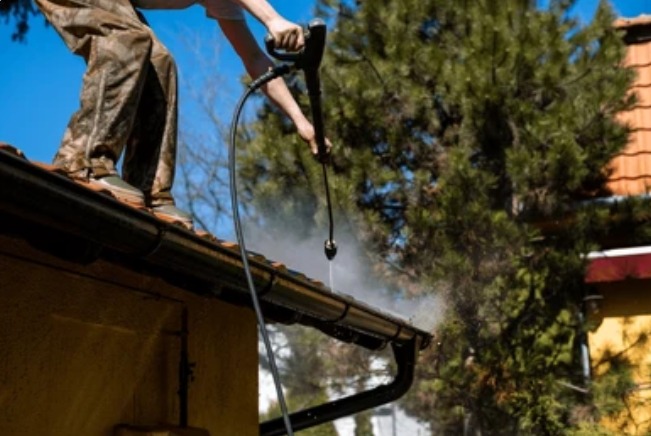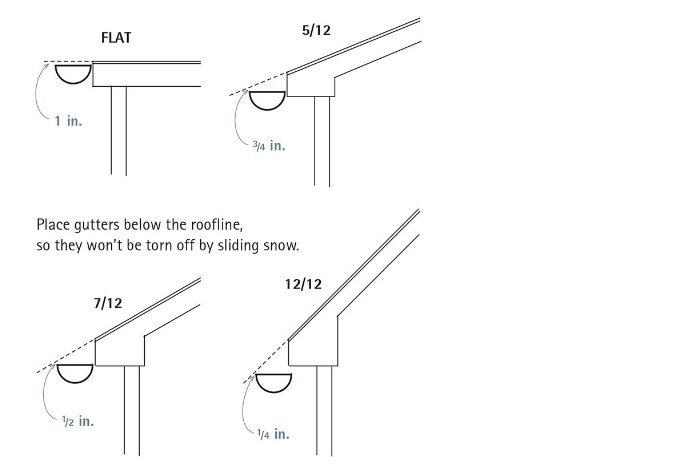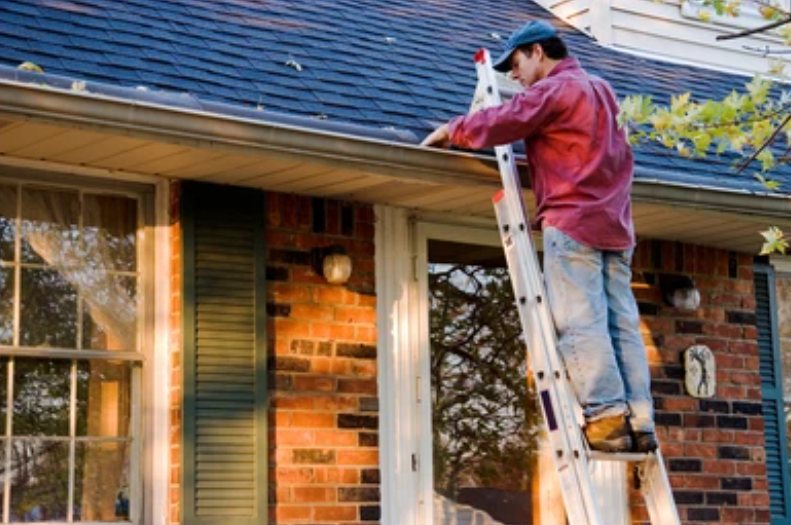A well-functioning gutter system is crucial in safeguarding the integrity of your home. One critical element that determines the effectiveness of this system is the gutter slope. Most people don’t know the correct gutter slope angle, and if you are one of them then let me tell you. The correct slope should have a subtle slant of about 1/4 inch for every 10 feet.
The proper gutter slope is crucial for the efficient operation of your gutter system. It ensures that rainwater is directed away from your house, protecting your home’s foundation and preventing potential water damage.
If you notice any signs of improper gutter slope, it’s best to seek the help of a professional gutter installer to rectify the issue and safeguard your home.
Importance of Proper Gutter Slope
The gutter slope aka gutter pitch plays an important role in the smooth operation of your gutter system. The slope ensures that rainwater flows efficiently towards the downspouts. It prevents it from stagnating or overflowing, which could lead to potential water damage to your home.
Protecting Your Home’s Foundation
Rain gutters direct water away from your home’s foundation. Without an appropriate slope, water could pool in the gutters and eventually overflow, eroding the soil around the foundation.
This could lead to significant damage, including a weakened foundation and potential flooding of basements or crawlspaces.
Preventing Water Damage
An improper gutter slope could cause water to spill over the edges of the gutters, leading to water damage on your siding, walls, and window or door frames. Moreover, moisture from accumulated water can promote mold growth behind the siding, in the attic, and other areas of your home.

A well-calculated gutter slope ensures that debris such as leaves, dirt, and sand gets swept away rather than accumulating in the gutters. This prevents clogging, which can impact the efficiency of your gutters and lead to overflow.
Determining the Proper Gutter Slope
To ensure that your gutters drain properly, you need to install them at the correct angle. The standard rule of thumb is to set a slope of about 1/4 inch for every 10 feet of gutter. However, this may vary depending on factors such as the structure of the roof, the type of gutter, and the length of the gutter run.
Long Gutter Runs
We recommend you pitch the gutter down from the middle towards a downspout at each end if your gutter runs exceeding 40 feet. This ensures that water drains effectively in both directions, preventing stagnation or overflow at the center of the gutter.
Short Gutter Runs
For shorter gutter runs, a single slope leading to one downspout should suffice. Here, the high point of the gutter starts at the farthest point from the downspout, sloping downwards until it reaches the downspout.
Signs of Improper Gutter Slope
Several signs may indicate an improper slope.
Water Spillage or Standing Water
If water consistently spills over the edges of the gutters during rainfall, it could be a sign that your gutter slope is not steep enough to channel the water efficiently toward the downspout.
Water pooling in your gutters instead of flowing towards the downspouts is a clear sign of an improper slope. Standing water can lead to rusting, sagging gutters, and potential ice dams during winter.
Clogged Gutters
If your gutters are frequently clogged despite regular cleaning, it could be a sign of improper slope. An efficient gutter slope should facilitate the flushing out of debris, preventing frequent clogs.
How to Adjust Your Gutter Slope

If your gutters fail the slope test, you’ll need to adjust them to the correct slope. While you can attempt to do this yourself, it’s often safer and more effective to enlist the services of a professional gutter installer. Here are some methods of adjusting the gutter slope:
Reinstalling Gutters
If the slope issue is severe, you may need to reinstall your gutters. This involves removing the gutters and reattaching them at the correct slope. A professional gutter installer can ensure that your new gutters meet the necessary slope requirements and drain water efficiently.
Adjusting Hangers
Many gutters use hangers to maintain their height and pitch. If your gutter slope is incorrect, you can adjust these hangers to change the slope. However, this method may not be effective for severe slope issues.
Fixing the Downspout
Gutters need to slope towards the nearest downspout for efficient water diversion. If your downspout is clogged or broken, it could cause a backup in your gutters. Fixing or replacing the downspout can help resolve this issue.
People Also Ask
1. What is the correct fall for guttering?
The correct fall for guttering is typically 1/4 inch for every 10 feet of gutter.
2. Can a gutter have too much slope?
Yes, a gutter can have too much slope. If the slope is too steep, it can reduce the amount of water the system can handle and cause it to spill over the edges.
3. How far below the drip edge should the gutter be?
You should install the gutter close to the drip edge typically within an inch to catch water effectively.
4. Are gutters installed at an angle?
Yes, gutters are installed at a subtle angle or slope to facilitate efficient water drainage.
5. How do you fix a gap between roof and gutters?
Fixing a gap between the roof and gutters involves adjusting the hangers to bring the gutter closer to the roof or reinstalling the gutters if the gap is severe.
